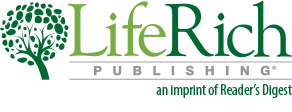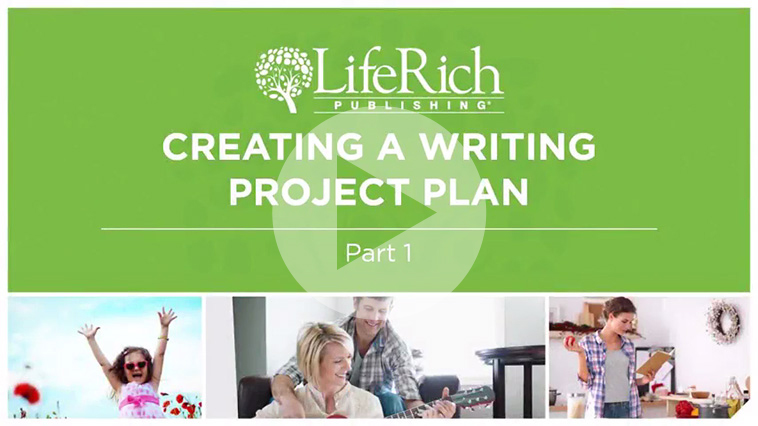Module 1: Getting Started
6 Tips on How to Get Published, Part Two: Four Paths to Publishing
Keith Ogorek, senior vice president of marketing for Author Solutions, offers his advice on how to get your book published. He explains the four paths to publishing and provides insight on which publishing path may be right for you.
Video Transcript
Hi, I'm Keith Ogorek. I'm really glad you're going to watch the second part to the webinar, "Six Tips on How to Get Published." In part one, we looked at six tips that every author can learn from on what it takes to become a published author. In part two, we're going to look at the four paths to publishing available to every author today. We'll look at the advantages and drawbacks to each path, and then I'll give you some ideas on how to think about which path is best for you. So let's get started.
The most important thing as you think about publishing is to understand your options. Today, there are four different choices, or paths, the every author has. First one is called do-it-yourself. The second I refer to as general contractor. The third is supported self-publishing. And the fourth is traditional publishing. The key differences among these paths is who owns the content, the difference in investment of time and money, and how fast you can get to market. So let's take a look at each of these, one at a time.
The first path that I mentioned is do-it-yourself, or DIY. This usually involves you uploading your manuscript and formatting your book. Typically, they're e-book only, but there are some that have print formats. Examples of platforms that you can use are Booktango, Book Country or Lulu. The thing to remember though is that publishing is never really free. If you're going to use a DIY tool, you need to understand that you still are probably going to need to invest in cover design or in some type of editing. Because if you do a book and don't make those investments, chances are your book is not going to be that good and therefore it won't be that competitive in the marketplace. That said, do-it-yourself, or DIY, is a great way for you to test your work. I know authors who will release an e-book, see how the marketplace reacts, get some feedback and make edits to the book before they actually release it widely. So DIY can work well depending on what kind of project you have.
The second path that I mentioned is the general contractor path. This is where you work with independent contractors, such as a cover designer, or an e-book formatter, or someone who can do editing. You hire those people yourself, or in some cases, you may do the work. The key is that you're going to coordinate all the tasks that it takes to write and publish a book.
A third path is what we call supported self-publishing. This is where LifeRich fits. Supported self-publishing is like working with a company who packages all the services you would possibly need. Think of it as a one-stop shop for professional services.
The way I like to compare and consider the three options are: DIY is like making a meal at home. It's completely dependent on how much time, talent and resources you have to bring to that. General contractor is like going to a deli. You are relying on someone else's time and talent to prepare meals for you. Now you have the option of how much you're going to spend and what you want, so you're still in control, but you haven't been the one who has spent all the time in the kitchen gathering and preparing the ingredients. Supported self-publishing, in contrast, is like going to a restaurant. You have a full menu of services and you have people waiting on you as you need them. As you think about those three options, obviously going to a restaurant is going to cost more in terms of money, but it's going to be greater in terms of the service and the selection that you have. So really it comes down to understanding what you want to do and what budget you have, and I'll talk a little bit more about that.
We've talked about three self-publishing paths. There's a fourth path that most people are familiar with and that's traditional publishing. Here you almost always need an agent to represent you, but one of the key things that changed recently is self-published titles are being watched by traditional publishers. So it used to be your only path to any traditional publisher was through an agent, but now you actually can self-publish and be picked up from there, because you own the content and control the content. One of the key things though that is often true in traditional publishing is you need to fit their catalog. That means they have a certain number of books that they're going to publish in a year, and so even if you have a great book, they may have already filled up the quantity of books that they're going to publish this year, so you may have to wait for another year to get picked up for them.
So which path is best for you? Let's look at the advantages and drawbacks of each of these. From a dollars invested standpoint, you're going to have to invest some money no matter which path you choose. Time invested is another area for you to consider. I believe that the most time will be invested when you choose a general contractor path, but you're still going to have to invest time even if you work with a traditional publisher. Another key consideration is what services do you need? With DIY, there are some services available. For general contractor, you're going to have to find them yourself. With supported self-publishing, you have a menu of services that you can choose from. And with traditional publishing, you will have services, but it's someone else who's going to be able to dictate and determine what services you need.
A big difference between the three DIY paths and traditional publishing is how fast you get to market. With self-publishing, which is DIY, general contractor and supported, you control how fast you get to the market. Sometimes you can have influence in traditional publishing, but more often than not, they're going to make the decision. And then with respect to rights, with self-publishing, you decide what you want to do with your rights. But, in traditional publishing, you're granting the rights to someone else. Now, you can limit what you grant them. You may only want to grant them print rights and not e-book, or U.S. rights but not international rights. But in the end, you are giving the right to someone else to control your content.
With respect to tracking royalties, if you choose a general contractor path, you're likely going to have to do that yourself. If you choose one of the other paths, it will be done for you. And then finally, when you think about book sales, from a DIY standpoint, you likely will only have e-book sales, and in many cases, only go through retail channels where they sell e-books. From a general contractor path, you may choose to go through the retail channels, or you may just do direct sales. With both supported and traditional, you will have both channel and direct sales available for you.
An easy way to think about that is to identify these key elements: What are your goals and expectations? What skills and experience will you bring to the project? What time commitment do you have? And what budget will you make available? If you can be clear on those four elements, you will be able to make a good decision about which path is best for you. And the key thing to remember is that not every path is the right path for every project or for every person. In some cases, for some books, you may want to choose a DIY path, but in other cases, you may have a book that traditional publishers are interested in. There is not one solution that fits every book or every author in this day and age. That's what makes this the best time in history to be an author.
Well, that concludes the webinar, "Six Tips on How to Get Published." In our next webinar, "Creating a Writing Project Plan," we're going to look at how to identify your audience, how to identify your goals and what you can do to know your genre. For information on publishing, feel free to contact a publishing consultant at LifeRich Publishing for a free consultation.


